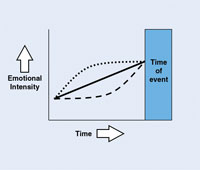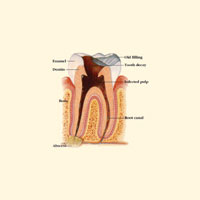Oh goodie, it’s that time again. Everyone comes together, circles the table, and stares. Arms locked across chests, they gaze at the ceiling, the floor, the clock, the stain on doctor’s lab coat. Yes, it’s another staff meeting, and the last time you enjoyed intellectual stimulation this riveting was during last month’s meeting when you used the time to study the shingle patterns on the neighboring roofs. Staff meetings—desperately needed by all dental teams, deeply despised by many.
Admittedly, dentists often view staff meetings as a costly and stressful exercise in futility that ultimately results in lost production time and lower revenue. The common lament from doctors is, “I’ve tried staff meetings, only to abandon them because everyone was looking at me to do all the talking.” Conversely, team members will assert, “We give input, but nothing ever changes.” In virtually all cases, the meetings couldn’t produce results that would satisfy anyone because there wasn’t a system or a standard established.
In his book, Death By Meeting, author and management guru Patrick Lencioni sums up the problem with meetings:
• First, they are boring, dull, and tedious. “Sitting through an uninspired staff meeting…would have to rank right up there with the most painful activities of modern business culture.”
• Second, they are not effective. “The most justifiable reason to loathe meetings is that they don’t contribute to the success of our organizations.” You might think from such comments that Lencioni would be advocating a total dismissal of this tired business ritual. In fact, the opposite is true.
Most critical business decisions are made in meetings, and such is the case when it comes to the business of dentistry. It is in staff meetings that the team identifies and solves problems, examines systems and areas of responsibility, establishes policies, presents information, motivates and educates one another, exchanges ideas—all of which are vitally important to growing a thriving practice.
So, how do you create business meetings that are both inspired and effective? First, shift your attitude. Look at meetings not from the standpoint of revenue lost but rather the potential for significant revenue gain. Next, treat meetings as you would any other system. Establish expectations and standards, and implement the fundamentals of inspired and effective staff meetings.
THE AGENDA
Each month the agenda includes standard items that the practice is continuously monitoring. These are all areas affecting the profitability/success of the practice. Some examples include the following: number of new patients, recall patients, collections, treatment acceptance, production, accounts receivable, unscheduled time units for doctor and hygiene, uncollected insurance revenues over 60 days, overhead, etc.
One person is responsible for compiling and distributing the agenda to doctor and staff in advance of the meeting. However, this person is not in charge of developing the entire agenda. That task is the responsibility of the full team.
Post the agenda in the breakroom or other area where staff will see it regularly and can add items as they come up during the month. Issues that present themselves regularly in the daily huddle but require more involved discussion and analysis should be put on the monthly meeting agenda. In addition to practice systems, which should be standard on each month’s agenda, consider items such as improving the work environment, examining the patient experience in detail, practice/ patient communication, etc. List the most critical issues highest on the agenda to ensure there is adequate time to discuss them. Determine how much time you will spend discussing each matter, avoid getting bogged down on unrelated topics, and insist that team members come prepared to discuss the items listed.
THE MEETING
Assign a facilitator/leader, other than the doctor, to “guide” the group in the discussion. Talk only about what is on the agenda. First, cover the key systems. Each month the individual team members report on the status of their specific areas. For example, the scheduling coordinator would report on key indicators within the scheduling system: (1) the number of new patients scheduled for the month, (2) the number of new patients actually seen, (3) the number of emergency patients scheduled for the month, (4) the number of emergency patients treated for the month, (5) the number of emergency patients converted to comprehensive exams, (6) the number and dollar amount of unscheduled time units for the month, and (7) the number of patients with unscheduled treatment.
Now that everyone knows the numbers, the group can discuss if the practice is on track with its scheduling goals. Are specific system barriers preventing the scheduling coordinator, and consequently the practice, from achieving those goals? Use the collective problem-solving skills of the team to develop strategies to address those barriers and help identify solutions to problems that may be occurring in the scheduling system.
THE OPINIONS, VIEWS, AND DISAGREEMENTS
Seek input from everyone, and don’t be afraid of conflicting views. In fact, encourage it. When team members raise concerns, problems, and issues, they enable the entire group to explore the positives and negatives of a particular topic and address those effectively. If consensus is reached too quickly on major issues, chances are good that team members are not sharing their views openly and honestly. They are waiting to whisper their true opinions after the meeting. While consensus is good to strive for, it’s not always possible. Ultimately, the team needs to agree that while individuals may have disagreements during the discussion, everyone supports the final decision, which is made by the doctor.
To encourage discussion, the facilitator should ask questions such as, “How do you feel about this? What is your reaction to that? As the patient, how would you react? What are the advantages of this approach? What are the potential disadvantages?” Team participation is essential not only to meeting success but also to implementing successfully the recommendations that may result from meeting discussions.
THE PLAN OF ACTION
Delegate responsibility and establish deadlines for completing tasks identified during the staff meetings. For example, if hygiene cancellations are high and the group has developed a plan to reduce the cancellations, then the person responsible (probably the hygiene coordinator) needs to know he or she is accountable for implementing the changes and should be prepared to report on the effects of those changes at the next monthly meeting.
Once the systems are reported, the remaining time can be used to cover other items on the agenda, including staff training and education. For example, if team members attended a continuing education program, they should be expected to share with the team highlights from the program and specific techniques or strategies that they believe could be implemented in the practice.
If the office is offering a new service or product, then the staff meeting is an excellent venue to instruct the team on the new item, answer any questions, and ensure that every employee is prepared to answer questions from patients. If the doctor is offering a new treatment such as implants, he or she should schedule time during the meeting to educate the entire team about the procedure. The group can discuss how to market the procedure, how to discuss it effectively with patients, how to handle questions about it, where they can acquire additional information, etc. Teams also can use the time to address particular challenges, such as collections or effectively explaining the financial policy to patients, through techniques such as role-playing. In addition, newsletter articles on numerous practice issues can be shared and discussed during the meetings.
THE ENVIRONMENT
If possible, the 2-hour monthly staff meetings should be held off-site in a conference room with a conference table, eliminating outside interruptions. Seek consensus from the staff as to the best time to hold staff meetings, and remember that meetings scheduled outside normal work hours should be paid.
Evaluate the quality of your monthly business meeting by answering the following questions:
Were the discussion topics known prior to the meeting? Did co-workers have an opportunity to contribute to the meeting? Was the meeting environment comfortable? Did the meeting start and finish on time? Did everyone have a voice in the discussion? Did anyone dominate the meeting? Were minutes distributed after the meeting to document what was discussed? Were recommended actions given deadlines for completion? Was each topic given adequate time? Were there outside interruptions?
CONCLUSION
Meetings are intended to be designated times in which you can focus all of your energy and team resources on addressing key practice issues. Run correctly, they are the most effective means to identify and solve problems, establish policies, share information, motivate each other, define areas of responsibility, and exchange ideas. Use them to your practice’s full advantage.
Ms. McKenzie, certified management consultant, is a nationally known lecturer and author. She is CEO of The McKenzie Company, which has provided success-proven management systems to dentistry since 1980 and offers a full line of educational management products at mckenziemgmt. com. In addition, the company offers a vast array of practice enrichment programs and team training. Ms. McKenzie is the editor of the e-Management newsletter, which provides practice management tips and is sent complimentary to practices nationwide. To subscribe visit mckenziemgmt.com. Ms. McKenzie welcomes specific practice questions and can be reached at (877) 777-6151 or at sallymck@mckenziemgmt.com.











